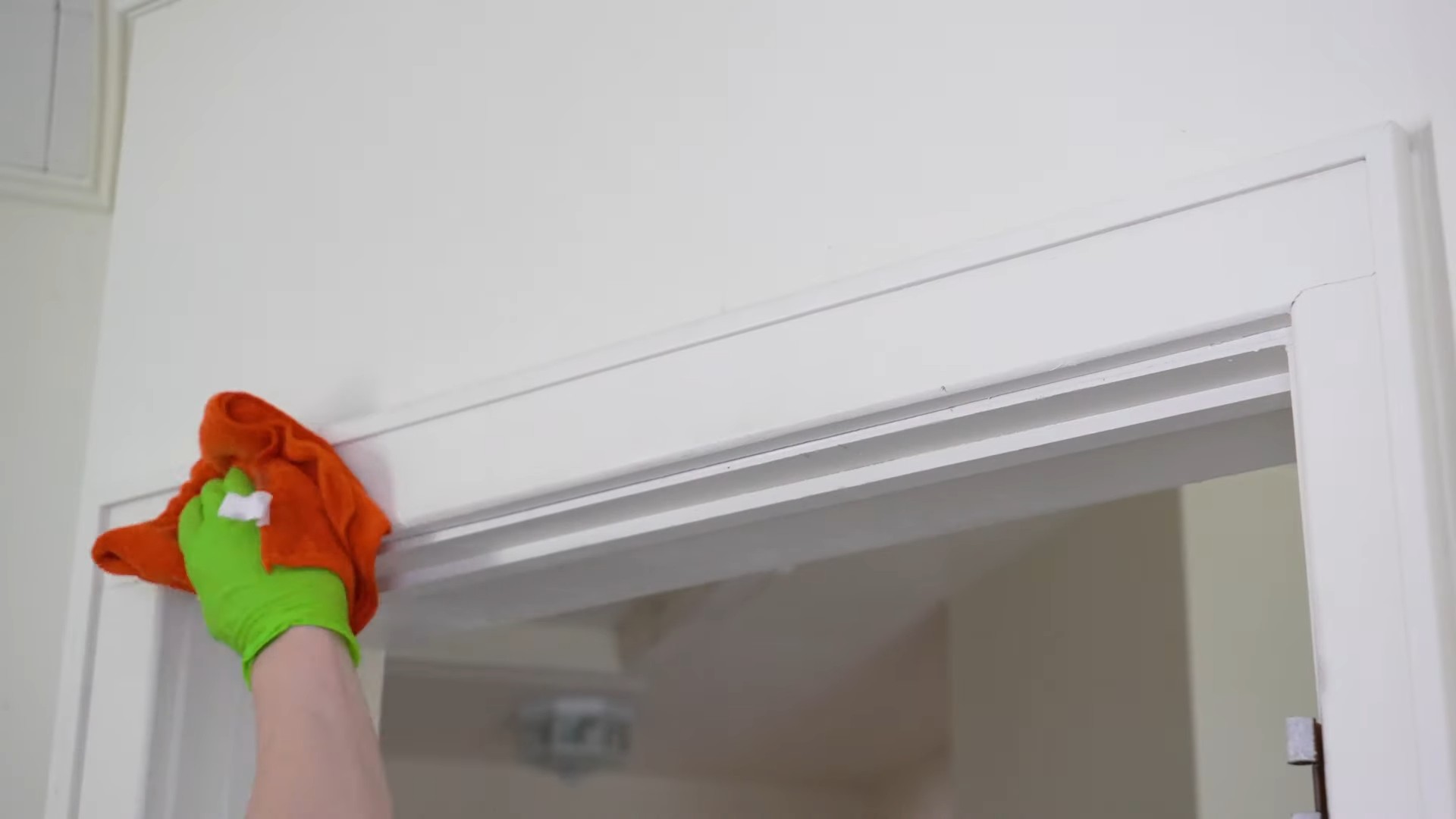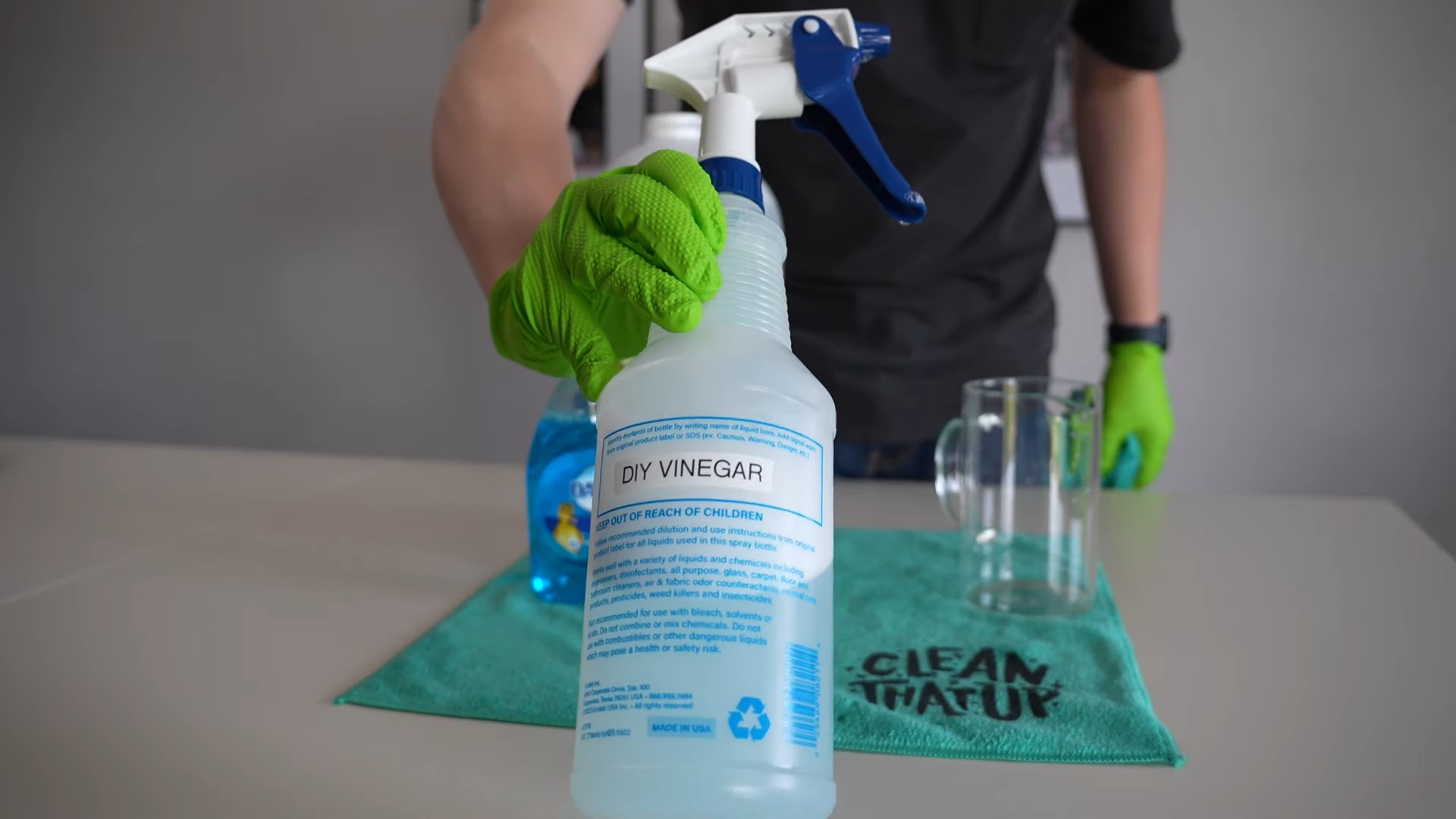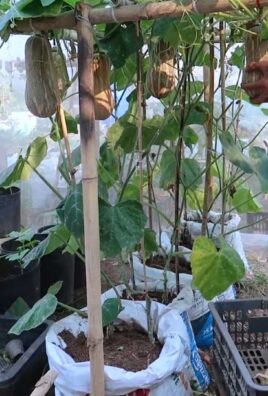Vinegar DIY Cleaning Recipes: Unlock the sparkling potential of your home with a pantry staple! For generations, vinegar has been more than just a condiment; it’s been a secret weapon for savvy homemakers. From ancient civilizations using it as a disinfectant to our grandmothers relying on it for spotless windows, vinegar’s cleaning power is deeply rooted in history.
But in today’s world, where we’re bombarded with harsh chemicals and expensive cleaning products, rediscovering the magic of vinegar is more important than ever. I’m excited to share some amazing Vinegar DIY Cleaning Recipes that are not only incredibly effective but also eco-friendly and budget-friendly.
Are you tired of spending a fortune on cleaners filled with ingredients you can’t even pronounce? Do you want to create a healthier, less toxic environment for your family? Then you’re in the right place! This article is packed with simple, step-by-step guides to creating your own powerful cleaning solutions using just vinegar and a few other common household items. Get ready to ditch the chemicals and embrace the natural cleaning power of vinegar – your home (and your wallet) will thank you!

DIY Vinegar Cleaning Recipes: Natural Power for a Sparkling Home
Hey there, fellow DIY enthusiasts! I’m so excited to share some of my favorite vinegar cleaning recipes with you. Vinegar is a powerhouse cleaner, and it’s super affordable and eco-friendly. Forget those harsh chemicals – let’s harness the natural cleaning power of vinegar!
Why Vinegar?
Before we dive into the recipes, let’s quickly chat about why vinegar is such a fantastic cleaning agent. It’s a mild acid, which means it’s great at cutting through grease, dissolving mineral deposits, and killing bacteria. Plus, it’s non-toxic, making it safe for your family and pets. I always feel good knowing I’m not spraying harmful chemicals around my home.
Important Safety Note:
Never mix vinegar with bleach! This creates toxic chlorine gas, which is extremely dangerous. Always use vinegar separately and rinse surfaces thoroughly after cleaning with other products.
General Vinegar Cleaning Solution: Your All-Purpose Friend
This is my go-to recipe for everyday cleaning. It’s simple, effective, and smells much better than straight vinegar (trust me!).
Ingredients:
* 1 part white distilled vinegar
* 1 part water
* Optional: A few drops of your favorite essential oil (lemon, lavender, and tea tree are great choices)
Instructions:
1. Mix it up: In a spray bottle, combine the vinegar and water. If you’re using essential oils, add a few drops. I usually go for about 5-10 drops per cup of solution.
2. Shake well: Give the bottle a good shake to ensure everything is properly mixed.
3. Spray and wipe: Spray the solution onto the surface you want to clean and let it sit for a minute or two.
4. Wipe clean: Use a clean cloth or sponge to wipe the surface clean. For stubborn messes, you might need to scrub a little.
5. Dry (if needed): If you’re cleaning glass or mirrors, you might want to dry the surface with a clean, dry cloth to prevent streaks.
Uses:
* Countertops (except granite and marble – more on that later!)
* Sinks
* Showers and bathtubs
* Floors (check material compatibility first!)
* Appliances (exterior)
Cleaning Your Microwave with Vinegar: Steam Cleaning Magic
Cleaning the microwave is one of those chores I always dread, but this vinegar trick makes it so much easier!
Ingredients:
* 1/2 cup white distilled vinegar
* 1/2 cup water
* Microwave-safe bowl
Instructions:
1. Combine ingredients: In the microwave-safe bowl, mix the vinegar and water.
2. Microwave: Place the bowl in the microwave and heat on high for 5-10 minutes, or until the solution is boiling and the microwave is filled with steam.
3. Let it sit: Leave the microwave door closed for another 5-10 minutes to allow the steam to loosen the grime. This is the key step!
4. Wipe clean: Carefully remove the bowl (it will be hot!) and wipe down the inside of the microwave with a clean cloth or sponge. The grime should come off easily.
5. Stubborn spots: For any stubborn spots, dip your cloth or sponge in the vinegar solution and scrub gently.
Descaling Your Kettle with Vinegar: Goodbye Mineral Buildup
Hard water can leave mineral deposits in your kettle, affecting the taste of your tea and coffee. Vinegar to the rescue!
Ingredients:
* 1 part white distilled vinegar
* 2 parts water
Instructions:
1. Fill the kettle: Fill the kettle with the vinegar and water mixture.
2. Boil: Bring the mixture to a boil.
3. Let it sit: Turn off the kettle and let the solution sit for at least 30 minutes, or even overnight for heavy buildup.
4. Rinse thoroughly: Pour out the vinegar solution and rinse the kettle several times with clean water until the vinegar smell is gone.
5. Boil with fresh water: Boil a kettle full of fresh water and discard it to ensure all traces of vinegar are removed.
Cleaning Your Showerhead with Vinegar: Restore the Flow
A clogged showerhead can reduce water pressure and make showering less enjoyable. Vinegar can dissolve mineral deposits and restore the flow.
Ingredients:
* White distilled vinegar
* Plastic bag (large enough to fit your showerhead)
* Rubber band or twist tie
Instructions:
1. Fill the bag: Fill the plastic bag with enough vinegar to completely submerge the showerhead.
2. Secure the bag: Place the bag over the showerhead, ensuring the showerhead is fully submerged in the vinegar. Secure the bag with a rubber band or twist tie.
3. Soak: Let the showerhead soak in the vinegar for at least 30 minutes, or preferably overnight for heavy buildup.
4. Remove and rinse: Remove the bag and discard the vinegar. Rinse the showerhead thoroughly with water.
5. Scrub (if needed): If there are still some mineral deposits, use an old toothbrush to scrub them away.
6. Run the water: Run the shower for a few minutes to flush out any remaining vinegar and debris.
Cleaning Your Coffee Maker with Vinegar: Keep Your Brew Tasting Fresh
Just like kettles, coffee makers can accumulate mineral deposits that affect the taste of your coffee. Regular cleaning with vinegar will keep your coffee tasting its best.
Ingredients:
* 1 part white distilled vinegar
* 1 part water
Instructions:
1. Fill the reservoir: Fill the coffee maker’s water reservoir with the vinegar and water mixture.
2. Brew: Run the coffee maker through a full brewing cycle.
3. Rinse: Discard the vinegar solution and fill the reservoir with fresh water.
4. Brew again: Run the coffee maker through two or three brewing cycles with fresh water to rinse away any remaining vinegar.
Cleaning Windows and Mirrors with Vinegar: Streak-Free Shine
Vinegar is a fantastic natural alternative to commercial window cleaners. It cuts through grime and leaves a streak-free shine.
Ingredients:
* 1/4 cup white distilled vinegar
* 2 cups water
* Spray bottle
* Microfiber cloth
Instructions:
1. Mix the solution: In the spray bottle, combine the vinegar and water.
2. Spray: Spray the solution onto the window or mirror.
3. Wipe: Wipe the surface with a clean microfiber cloth.
4. Dry (if needed): If you notice any streaks, use a clean, dry microfiber cloth to buff the surface.
Cleaning Your Dishwasher with Vinegar: Freshen and Sanitize
Vinegar can help remove food particles, mineral deposits, and odors from your dishwasher, leaving it fresh and sanitized.
Ingredients:
* 1 cup white distilled vinegar
Instructions:
1. Empty the dishwasher: Make sure your dishwasher is empty.
2. Place vinegar in a bowl: Place a dishwasher-safe bowl filled with 1 cup of white distilled vinegar on the top rack of the dishwasher.
3. Run a cycle: Run the dishwasher on a hot cycle.
4. Optional: Baking soda boost: For extra cleaning power, sprinkle a cup of baking soda on the bottom of the dishwasher before running the cycle.
Cleaning Your Washing Machine with Vinegar: Freshen and Deodorize
Over time, washing machines can accumulate detergent residue, fabric softener buildup, and musty odors. Vinegar can help clean and deodorize your washing machine.
Ingredients:
* 2 cups white distilled vinegar
Instructions (for top-loading machines):
1. Fill the machine: Fill the washing machine with hot water.
2. Add vinegar: Add 2 cups of white distilled vinegar to the water.
3. Agitate: Let the machine agitate for a few minutes to mix the vinegar and water.
4. Soak: Turn off the machine and let the solution soak for at least 30 minutes, or even overnight.
5. Drain and spin: Drain the water and run the machine through a full wash and spin cycle.
Instructions (for front-loading machines):
1. Add vinegar to dispenser: Pour 2 cups of white distilled vinegar into the detergent dispenser.
2. Run a cycle: Run the machine on a hot cycle.
3. Wipe the seal: After the cycle is complete, wipe down the rubber seal around the door to remove any lingering residue.
Removing Hard Water Stains with Vinegar: Tackle Those Stubborn Spots
Hard water stains can be a real pain, especially

Conclusion
So, there you have it! Ditching harsh chemicals and embracing the power of vinegar for your cleaning needs is not just a trend; it’s a revolution in how we approach household chores. These DIY vinegar cleaning recipes are a game-changer for anyone seeking a safer, more sustainable, and surprisingly effective way to keep their homes sparkling.
Why is this a must-try? Because it’s simple, cost-effective, and incredibly versatile. You’re likely already stocked with vinegar, making it an accessible solution for tackling everything from grimy countertops to stubborn hard water stains. Think about the money you’ll save by not constantly repurchasing expensive, specialized cleaning products! Plus, you’ll be reducing your exposure to potentially harmful chemicals, creating a healthier environment for yourself, your family, and even your pets.
But the benefits extend beyond just savings and safety. Vinegar’s natural acidity makes it a potent disinfectant, capable of killing many common household bacteria and viruses. It’s also a fantastic deodorizer, neutralizing unpleasant odors instead of just masking them with artificial fragrances. And let’s not forget its descaling abilities, perfect for tackling mineral buildup in your coffee maker, showerhead, and other appliances.
Ready to take your cleaning game to the next level? Here are a few suggestions and variations to get you started:
* **Infused Vinegar:** Elevate your cleaning experience by infusing your vinegar with citrus peels (lemon, orange, grapefruit) or herbs (lavender, rosemary, thyme). Simply add the peels or herbs to a jar of vinegar and let it steep for a few weeks before straining and using. This adds a pleasant scent and can even enhance the cleaning power.
* **Vinegar and Baking Soda Power Duo:** For extra-tough cleaning jobs, combine vinegar with baking soda. This creates a fizzing action that helps to loosen dirt and grime. Use this combination carefully, as it can produce carbon dioxide gas. Never mix vinegar and baking soda in a closed container.
* **Essential Oil Boost:** Add a few drops of your favorite essential oils to your vinegar cleaning solutions for an extra boost of fragrance and potential antibacterial properties. Lavender, tea tree, eucalyptus, and lemon are all great choices.
* Experiment with Dilution Ratios: The ideal vinegar-to-water ratio may vary depending on the specific cleaning task. Start with a weaker solution and gradually increase the concentration as needed.
We’re confident that once you try these DIY vinegar cleaning recipes, you’ll be amazed by the results. It’s a simple switch that can make a big difference in your home and your health.
So, what are you waiting for? Grab that bottle of vinegar and get cleaning! We encourage you to try these recipes and share your experiences with us. Let us know which recipes worked best for you, any variations you tried, and any tips you have to share. Your feedback will help others discover the amazing power of vinegar DIY cleaning recipes. Share your stories in the comments below!
Frequently Asked Questions (FAQs)
Is vinegar safe to use on all surfaces?
No, vinegar is not safe to use on all surfaces. Avoid using vinegar on natural stone surfaces like marble, granite, and limestone, as its acidity can etch and damage them. It’s also best to avoid using vinegar on waxed wood furniture, as it can strip the wax finish. Be cautious when using vinegar on electronics, as moisture can cause damage. Always test a small, inconspicuous area before applying vinegar to a larger surface.
What type of vinegar is best for cleaning?
Distilled white vinegar is the best type of vinegar for cleaning. It’s inexpensive, readily available, and has a consistent acidity level. Avoid using other types of vinegar, such as apple cider vinegar or balsamic vinegar, as they may contain sugars or other additives that can leave a sticky residue.
Can I mix vinegar with bleach?
Never mix vinegar with bleach. This combination creates chlorine gas, which is highly toxic and can be fatal. Always use vinegar and bleach separately and never in the same cleaning solution.
How do I get rid of the vinegar smell after cleaning?
The vinegar smell will typically dissipate within a few hours. To speed up the process, you can open windows and doors to ventilate the area. You can also add a few drops of essential oils to your vinegar cleaning solution to mask the smell. Another option is to wipe down the cleaned surfaces with a damp cloth and plain water after cleaning with vinegar.
Can vinegar kill mold?
Yes, vinegar can kill some types of mold. However, it’s not as effective as bleach for killing all types of mold, especially on porous surfaces. To kill mold with vinegar, spray undiluted white vinegar onto the affected area and let it sit for an hour. Then, scrub the area with a brush and wipe it clean with a damp cloth. For severe mold infestations, it’s best to consult with a professional mold remediation service.
How often should I clean with vinegar?
The frequency of cleaning with vinegar depends on the specific area and your personal preferences. For high-traffic areas like kitchens and bathrooms, you may want to clean with vinegar once or twice a week. For less frequently used areas, you can clean with vinegar less often.
Can I use vinegar to clean my laundry?
Yes, vinegar can be used to clean laundry. Adding 1/2 cup of white vinegar to your washing machine during the rinse cycle can help to soften clothes, remove odors, and brighten colors. Vinegar can also be used to remove stains from clothing.
Is vinegar safe for septic systems?
Yes, vinegar is generally safe for septic systems. It’s a natural and biodegradable substance that won’t harm the bacteria in your septic tank. However, it’s important to use vinegar in moderation, as excessive amounts can disrupt the balance of your septic system.
What are some other uses for vinegar in cleaning?
Vinegar has a wide range of uses in cleaning, including:
* Cleaning windows and mirrors
* Descaling coffee makers and kettles
* Cleaning showerheads
* Removing hard water stains
* Cleaning toilets
* Deodorizing garbage disposals
* Cleaning microwave ovens
* Polishing chrome and stainless steel
Where can I find more DIY vinegar cleaning recipes?
You can find more DIY vinegar cleaning recipes online through various websites and blogs dedicated to natural cleaning. You can also find recipes in books and magazines focused on eco-friendly living. Remember to always research and verify the safety and effectiveness of any recipe before trying it.





Leave a Comment